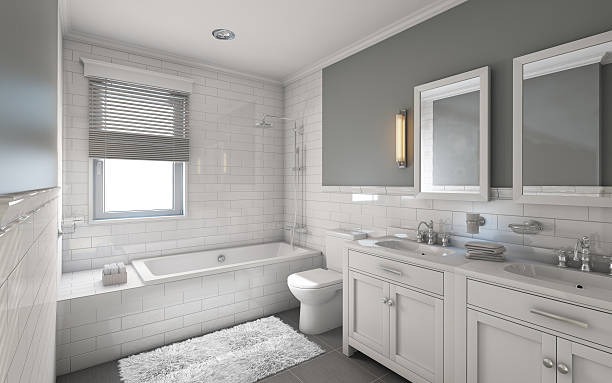When it comes to choosing the right tile for your home or business, it’s essential to consider a range of factors that impact aesthetics and functionality. From cost and durability to water absorption rates and slip resistance, these considerations can help you align your tiling preferences with specific needs and requirements.
Cost
Despite sharing the same name, ceramic and porcelain tiles are not the same. Both fall under the category of rigid clay-based kiln-fired tiles gach bong 20×20 but differ in their water resistance and durability. Choosing the right tile can help you balance aesthetics and budget for your space.
Both porcelain and ceramic offer a wide range of design options to suit any style preference. Ceramic tiles can create sleek and contemporary spaces, while also imitating the warmth and texture of natural materials like stone and wood.
Porcelain is a denser and harder tile than ceramic, making it more durable. It can withstand heavier foot traffic, high humidity levels, and freezing temperatures.
However, this density and hardness comes at a price, as it is more expensive to manufacture and install. Ceramic, on the other hand, is softer and more porous. It’s easier to cut than porcelain, which can make it a good choice for DIYers. But it can be more brittle, which means it may require professional installation in some cases. It also has a lower water absorption rate, which makes it more suitable for areas exposed to moisture.
Durability
Depending on their intended use, the maintenance costs associated with each tile type will vary. In general, porcelain tiles require less care than ceramic because they are denser and have better water and heat resistance. Porcelain is also more durable, meaning that it will last longer and hold up well to heavy foot traffic.
Glazed porcelain tile has a protective glaze that resists staining and bacteria. This makes it a good choice for kitchen backsplashes and other areas of high moisture exposure. This surface is also scratch and chip resistant, making it suitable for a variety of design aesthetics.
It is now possible to digitally print any image or pattern onto porcelain using ink jet technology. This allows reclaimed wood, rare stone and other unique aesthetics to be faithfully reproduced. The advantage of this approach is that it eliminates the need to cut down natural material and reduces environmental impact. This makes it ideal for commercial and residential projects that prioritize durability. However, it is important to ensure that the resulting tile meets industry standards.
Maintenance
The style of tile you select impacts a wide range of project variables, including upfront costs, installation requirements and ongoing maintenance needs. Porcelain excels in moisture-prone areas, while ceramic offers budget-friendly beauty for lower traffic zones.
Both offer stunning options for your client’s space. But if your client’s design goals include a long lifespan for their flooring, porcelain might be the wiser option. It is denser, more difficult to chip and more resistant to stains and moisture than ceramic.
The ceramic tile’s porosity rating also affects its long-term performance. Ceramic tile absorbs water more readily, between 3% and 7% of its weight in one square inch. This makes it a less desirable choice for wet environments, where mold and mildew could thrive or freeze-thaw damage may occur. It is also more susceptible to stains, especially from acidic food, and it requires more frequent cleaning to avoid surface degradation. The denser material and firing process also make porcelain tiles more costly, not just to buy but to install, since they require specialized tools. This can add up over the course of a remodeling job.
Style
Choosing the right tile for your project can feel like a daunting task. A wrong choice can lead to costly replacements, maintenance headaches and design disappointments that last for years.
It’s important to understand the distinctions between ceramic and porcelain to ensure that you select the best tile for your space. If you’re looking for durability, design flexibility and moisture resistance then porcelain may be the right option for your next project.
Both glazed and unglazed porcelain tiles are manufactured from refined clays mixed with natural pigments then fired to harden them. During this process, they’re exposed to higher temperatures for longer periods than ceramic tiles. The result is porcelain tiles are harder, denser and less porous. This makes them ideal for use in heavy traffic areas and commercial projects. Ceramic tiles, on the other hand, are more vulnerable to wear-and-tear and can chip easier than their porcelain counterparts. They also aren’t as water-resistant, so they shouldn’t be used in spaces that experience a lot of moisture or humidity.
Best Tile Type for Bathroom or Kitchen
When it comes to remodeling a bathroom or kitchen, your choice of tile can have a significant impact on the overall design and performance of your space. While both ceramic and porcelain tiles are affordable options for floors and walls, each type offers unique advantages that may be best suited to your project’s specific requirements.
Both ceramic and porcelain tiles are available in a variety of colors, sizes and styles to meet your design vision. You can choose from classic square or rectangular shapes, eye-catching geometric patterns and even large-format tiles that offer a sleek, modern look with fewer grout lines.
Porcelain tiles have lower liquid absorption rates compared to ceramic tiles, making them the better choice for wet areas such as bathrooms or patios. Their high-end finish can mimic natural stone or wood for a luxurious aesthetic, and they’re more resistant to stains than ceramics. However, porcelain tiles are more expensive than ceramics and require a professional installer because of their denser composition. Plus, their glazed surface can wear off over time in high-traffic areas, showing the underlying tile color.
